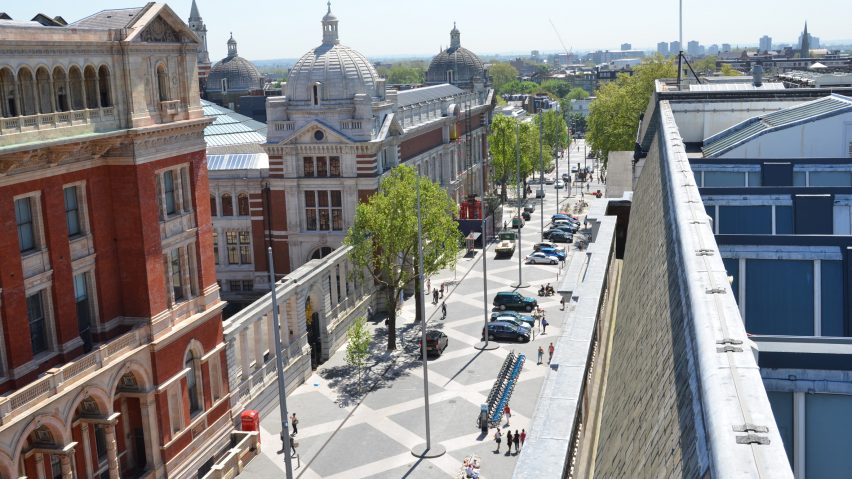"Shared space" streets have been called into question after a taxi ploughed into museum-goers on Exhibition Road, a broad boulevard shared by pedestrians and vehicles in London's South Kensington.
The driver of a Toyota Prius veered into a crowd of visitors in South Kensington's semi-pedestrianised road on Saturday 7 October, injuring 11 people. Nine of the group, as well as the driver, needed hospital treatment.
Originally believed to be a terror attack – like those that have taken place London and Westminster bridges, and across Europe in recent months – the incident was later confirmed as an accident. A 47-year-old man was arrested on dangerous driving charges, but later released under investigation.
While temporary barriers are being erected across the capital to combat the risk of vehicular attacks, Exhibition Road was one of London's first experiments in the removal of separation between cars and pedestrians in 2012.
But following the accident, Labour Party MP for Kensington, Emma Dent Coad, said it was time to rethink the design of shared spaces.
"It would be a huge shame if changes to our public realm, made to improve pedestrian experience, has instead made people more vulnerable," she wrote in a statement issued following the incident.
Dent Coad, a design writer and architecture historian, said there has been a marked rise in accidents since the area's redesign, which was carried out by Dixon Jones.
Incident at South Ken 'an accident, not terror-related'. Twitter-pals state, 'time to review' shared space. More accidents since redesign: pic.twitter.com/HDSuTPFmf9
— Emma Dent Coad (@emmadentcoad) October 7, 2017
"Twitter-pals state, 'time to review shared space'. More accidents since redesign," she tweeted alongside an accident map of the area following the incident.
"I have always shared these concerns re Exhibition Road. Whatever has happened, 'time to review' indeed."
She later proposed a petition to the Royal Borough of Kensington Council to fully pedestrian the area.
It was hoped the blurring of pavement and road in the redesign would force drivers to slow their speed and allow visitors to roam more freely between the the Science, Natural History and Victoria and Albert museums – which all have their entrances off Exhibition Road.
At the time, London-based architectural practice Dixon Jones said it was brought on board to address a streetscape that was "inefficient, dominated by traffic with narrow, crowded pavements and street clutter unable to handle the millions of people who visit annually".
The project was given multiple awards, including a prize from the Royal Institute of British Architects for Excellence in Walking and Public Realm, and earlier this year the V&A museum even opened a new AL_A-designed entrance off the road to capitalise on its heavy footfall.
In the lead up to the pioneering redesign of Exhibition Road, London's Department for Transport issued its first guidance on the creation of shared spaces.
Who's up for a petition to RBKC Council to fully pedestrianize Exhibition Road? We can do it! Let me know and I'll get it going.
— Emma Dent Coad (@emmadentcoad) October 7, 2017
The 2011 report Shared Space aimed at "reducing the dominance of motor vehicles, primarily through lower speeds and encouraging drivers to behave more accommodatingly towards pedestrians."
The concept became increasingly fashionable, with several key shopping districts in the capital such as Seven Dials in Covent Garden adopting a similar approach to shared vehicular and pedestrian space.
But concerns about the removal of kerbs, barriers and road markings were raised early on by organisations representing the interests of people with hearing and sight impairments – which have been reignited by this weekend's events.
And in 2015, a House of Lords report accused councils of putting public at risk through "misguided" shared space designs.
Photography is by Ben Freeman.

